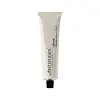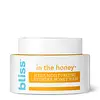What's inside
What's inside
 Key Ingredients
Key Ingredients

 Benefits
Benefits

 Concerns
Concerns

 Ingredients Side-by-side
Ingredients Side-by-side

Water
Skin ConditioningLeptospermum Scoparium Branch/Leaf Oil
TonicPersea Gratissima Oil
Skin ConditioningGlycerin
HumectantCetearyl Glucoside
EmulsifyingCetearyl Alcohol
EmollientStearic Acid
CleansingGlyceryl Stearate
EmollientTocopherol
AntioxidantHelianthus Annuus Seed Oil
EmollientDehydroacetic Acid
PreservativeBenzyl Alcohol
PerfumingBertholletia Excelsa Flower Extract
Skin ConditioningDaucus Carota Sativa Seed Oil
EmollientVitis Vinifera Seed Extract
AntimicrobialLimonene
PerfumingLinalool
PerfumingWater, Leptospermum Scoparium Branch/Leaf Oil, Persea Gratissima Oil, Glycerin, Cetearyl Glucoside, Cetearyl Alcohol, Stearic Acid, Glyceryl Stearate, Tocopherol, Helianthus Annuus Seed Oil, Dehydroacetic Acid, Benzyl Alcohol, Bertholletia Excelsa Flower Extract, Daucus Carota Sativa Seed Oil, Vitis Vinifera Seed Extract, Limonene, Linalool
Water
Skin ConditioningCucurbita Maxima Fruit Extract
Skin ConditioningHelianthus Annuus Seed Oil
EmollientEthylhexyl Palmitate
EmollientCetearyl Alcohol
EmollientGlycerin
HumectantPropanediol
SolventCellulose
AbsorbentCitrus Limon Peel Powder
AbsorbentGlyceryl Stearate
EmollientOryza Sativa Powder
Shea Butter Ethyl Esters
EmollientXylityl Sesquicaprylate
AntimicrobialLactobacillus/Pumpkin Ferment Extract
Skin ConditioningCucurbita Pepo Fruit Extract
Skin ConditioningCucurbita Pepo Seed Oil
EmollientSodium Hyaluronate
HumectantBromelain
Skin ConditioningPapain
Skin ConditioningLactobacillus Ferment
Skin ConditioningGlycolipids
Skin ConditioningTocopherol
AntioxidantAscorbyl Palmitate
AntioxidantDaucus Carota Sativa Root Extract
Skin ConditioningGlycine Soja Oil
EmollientDaucus Carota Sativa Seed Oil
EmollientHydrogenated Corn Oil
Skin ConditioningXanthan Gum
EmulsifyingAcacia Senegal Gum
MaskingSodium Lactate
BufferingCetyl Alcohol
EmollientStearyl Alcohol
EmollientPolyacrylate Crosspolymer-6
Emulsion StabilisingHydroxyethyl Acrylate/Sodium Acryloyldimethyl Taurate Copolymer
Emulsion StabilisingBehenyl Alcohol
EmollientCetearyl Glucoside
EmulsifyingCaprylyl/Capryl Glucoside
CleansingMaltodextrin
AbsorbentSodium Phytate
Tetrasodium Glutamate Diacetate
Phenoxyethanol
PreservativeEthylhexylglycerin
Skin ConditioningCitric Acid
BufferingParfum
MaskingEugenol
PerfumingCI 40800
Cosmetic ColorantCI 14700
Cosmetic ColorantWater, Cucurbita Maxima Fruit Extract, Helianthus Annuus Seed Oil, Ethylhexyl Palmitate, Cetearyl Alcohol, Glycerin, Propanediol, Cellulose, Citrus Limon Peel Powder, Glyceryl Stearate, Oryza Sativa Powder, Shea Butter Ethyl Esters, Xylityl Sesquicaprylate, Lactobacillus/Pumpkin Ferment Extract, Cucurbita Pepo Fruit Extract, Cucurbita Pepo Seed Oil, Sodium Hyaluronate, Bromelain, Papain, Lactobacillus Ferment, Glycolipids, Tocopherol, Ascorbyl Palmitate, Daucus Carota Sativa Root Extract, Glycine Soja Oil, Daucus Carota Sativa Seed Oil, Hydrogenated Corn Oil, Xanthan Gum, Acacia Senegal Gum, Sodium Lactate, Cetyl Alcohol, Stearyl Alcohol, Polyacrylate Crosspolymer-6, Hydroxyethyl Acrylate/Sodium Acryloyldimethyl Taurate Copolymer, Behenyl Alcohol, Cetearyl Glucoside, Caprylyl/Capryl Glucoside, Maltodextrin, Sodium Phytate, Tetrasodium Glutamate Diacetate, Phenoxyethanol, Ethylhexylglycerin, Citric Acid, Parfum, Eugenol, CI 40800, CI 14700
 Reviews
Reviews

Ingredients Explained
These ingredients are found in both products.
Ingredients higher up in an ingredient list are typically present in a larger amount.
Cetearyl alcohol is a mixture of two fatty alcohols: cetyl alcohol and stearyl alcohol. It is mainly used as an emulsifier. Emulsifiers help prevent the separation of oils and products. Due to its composition, it can also be used to thicken a product or help create foam.
Cetearyl alcohol is an emollient. Emollients help soothe and hydrate the skin by trapping moisture.
Studies show Cetearyl alcohol is non-toxic and non-irritating. The FDA allows products labeled "alcohol-free" to have fatty alcohols.
This ingredient is usually derived from plant oils such as palm, vegetable, or coconut oils. There is debate on whether this ingredient will cause acne.
Due to the fatty acid base, this ingredient may not be Malassezia folliculitis safe.
Learn more about Cetearyl AlcoholCetearyl Glucoside is a surfactant and emulsifier. It can be produced from synthetic of natural sources of cetearyl alcohol and glucose.
Emulsifiers help prevent ingredients from separating, such as oils and waters. It can also be used to enhance the texture of products.
As a surfactant, Cetearyl Glucoside helps during the cleansing process. By gathering all the dirt and oils, it allows these molecules to be washed away easily.
Learn more about Cetearyl GlucosideDaucus Carota Sativa Seed Oil is the oil obtained from the seed of the edible carrot. The oil is created by steaming and distilling the seeds of the plant.
Carrot Seed Oil has hydrating, anti-inflammatory, and antioxidant properties.
As an emollient, carrot seed oil creates a thin film on the skin. This film prevents moisture from escaping, keeping your skin hydrated. Carrot seed oil has a soothing effect and can help alleviate inflammation.
As an antioxidant, carrot seed oil may help reduce the signs of aging. Antioxidants are able to neutralize free-radical molecules, or molecules that can damage our skin's cells and DNA.
Emerging studies show the alpha-pinene and carotol content give carrots antibacterial and antifungal properties. However, this is dependent on the amount of each compound. More studies are needed.
Carrot Seed Oil is not carrot oil. Carrot oil is created by mixing parts of the carrot in a carrier oil, such as coconut oil.
Learn more about Daucus Carota Sativa Seed OilGlycerin is already naturally found in your skin. It helps moisturize and protect your skin.
A study from 2016 found glycerin to be more effective as a humectant than AHAs and hyaluronic acid.
As a humectant, it helps the skin stay hydrated by pulling moisture to your skin. The low molecular weight of glycerin allows it to pull moisture into the deeper layers of your skin.
Hydrated skin improves your skin barrier; Your skin barrier helps protect against irritants and bacteria.
Glycerin has also been found to have antimicrobial and antiviral properties. Due to these properties, glycerin is often used in wound and burn treatments.
In cosmetics, glycerin is usually derived from plants such as soybean or palm. However, it can also be sourced from animals, such as tallow or animal fat.
This ingredient is organic, colorless, odorless, and non-toxic.
Glycerin is the name for this ingredient in American English. British English uses Glycerol/Glycerine.
Learn more about GlycerinGlyceryl Stearate is a mix of glycerin and stearic acid.
It is used to stabilize the mixing of water and oil ingredients. By preventing these ingredients from separating, it can help elongate shelf life. It can also help thicken the product's texture.
As an emollient, it helps soften skin and supports barrier-replenishing ingredients.
In cosmetics, Glyceryl Stearate is often made from vegetable oils or synthetically produced.
This ingredient may not be fungal-acne safe
Fun fact: The human body also creates Glyceryl Stearate naturally.
Learn more about Glyceryl StearateHelianthus Annuus Seed Oil is the oil derived from the seeds of a Sunflower. Sunflower seed oil is non-fragrant. It is an emollient, meaning it helps to soften the skin.
Sunflower seed oil contains many fatty acids. The fatty acids found in sunflower seeds include (from highest amount to least): linoleic acid, myristic acid, palmitic acid, stearic acid, arachidic acid, oleic acid, and linolenic acid.
These fatty acids help the skin create ceramides. Ceramides play a role in repairing the skin barrier.
Helianthus Annuus Seed Oil helps moisturize the skin. This in turn helps the skin look more rejuvenated and smoother.
Sunflowers are rich in vitamin E.
Historians believe Indigenous cultures of North America domesticated sunflowers before corn. Thus they relied on sunflower oil for a variety of uses. One such use is moisturizing skin and hair.
Sunflower seed oil may not be fungal acne safe. We recommend speaking with a professional if you have any concerns.
Learn more about Helianthus Annuus Seed OilTocopherol (also known as Vitamin E) is a common antioxidant used to help protect the skin from free-radicals and strengthen the skin barrier. It's also fat soluble - this means our skin is great at absorbing it.
Vitamin E also helps keep your natural skin lipids healthy. Your lipid skin barrier naturally consists of lipids, ceramides, and fatty acids. Vitamin E offers extra protection for your skin’s lipid barrier, keeping your skin healthy and nourished.
Another benefit is a bit of UV protection. Vitamin E helps reduce the damage caused by UVB rays. (It should not replace your sunscreen). Combining it with Vitamin C can decrease sunburned cells and hyperpigmentation after UV exposure.
You might have noticed Vitamin E + C often paired together. This is because it is great at stabilizing Vitamin C. Using the two together helps increase the effectiveness of both ingredients.
There are often claims that Vitamin E can reduce/prevent scarring, but these claims haven't been confirmed by scientific research.
Learn more about TocopherolWater. It's the most common cosmetic ingredient of all. You'll usually see it at the top of ingredient lists, meaning that it makes up the largest part of the product.
So why is it so popular? Water most often acts as a solvent - this means that it helps dissolve other ingredients into the formulation.
You'll also recognize water as that liquid we all need to stay alive. If you see this, drink a glass of water. Stay hydrated!
Learn more about Water